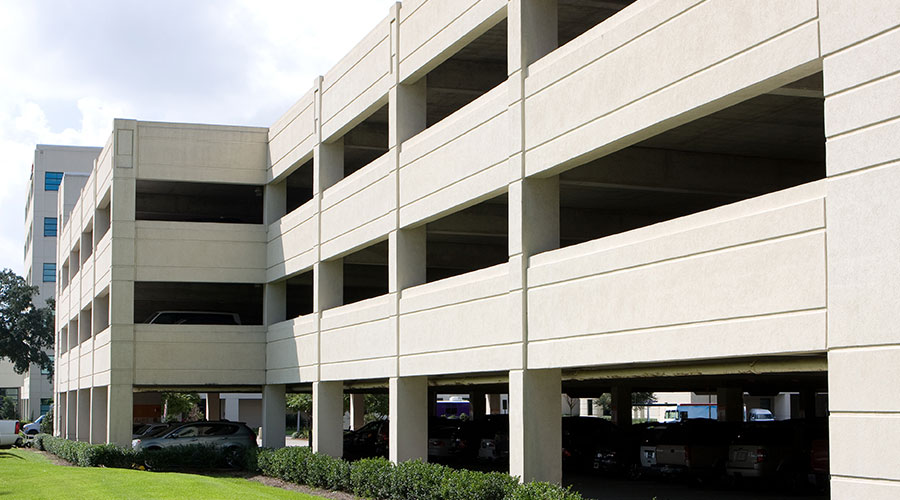Getting the Look Without the Costs
Four companies use space, furnishings and finishes to create attractive interiors that even CFOs can value.
Interior designs that break down physical and psychological barriers to work don’t have to break the bank. Neither do they have to result in mediocre, nondescript interiors.
Facility executives strive for interiors that get occupants excited about working for a particular company while making the chief financial officer happy about the cost. Keeping initial costs in check is just the beginning. Facility executives are increasingly attempting to drive down the amount of space an organizations needs to lease or own.
As the efforts of four different organizations show, great design doesn’t require expensive materials and furniture. Effective designs bring space to life with enough inspiration to make it special for occupants.
Time Inc.: One Building, Separate Needs
Since 2001, magazine publisher Time Inc. has been working on a “rolling refurbishment” of its 35 floors in the company’s landmark Time-Life building in Manhattan. Today, this renovation effort is slightly more than half completed.
Time Inc. has a long history of growing by acquiring magazines and by launching new franchises. Since the Time-Life Building opened in 1958, the company’s various magazines and administrative groups had been making ad hoc space changes as needed. The result was a hodgepodge collection of work environments.
The company’s design committee, which included the chief executive officer, corporate editor, and vice president of real estate and facilities capital projects, set out to create a space plan that would work for any occupant on any floor. The caveat was that within this universal solution the individual magazines and business groups needed to have the ability to tailor the space to meet specific needs while promoting distinct brand identities.
Time Inc.’s people were understandably skeptical about the renovation. As the team worked toward a solution, the design committee helped achieve organizational buy-in by inviting a range of staffers — from executive vice presidents to editorial assistants — to voice their opinions on office and workstation mockups exhibited with all the proposed paint, finishes, carpeting, lighting and components.
The solution selected is an open plan applied to each of the 28,000-square-foot, column-free floors. One by one, the existing floors are being demolished to the raw concrete shell, with maximum height provided by leaving ceiling planes open to the slab’s underside. The space will then be rebuilt with an unstaffed reception area, an equal number of open workstations and glass-fronted closed offices, a large conference room with curved glass walls, and a community center off the elevator lobby. The lighting, HVAC, electrical and sprinkler systems all are designed to withstand any changes the occupants might make without needing to be reconfigured.
Public space on each floor allows magazines to communicate their brands using artwork, display areas and imagery projected in the elevator lobby reception area.
The universal fit ensures that Time Inc. can rearrange offices without moving partitions or tearing down walls. A new magazine could move into a floor over a weekend and simply change the graphic identity in the entry areas.
The 42nd floor, home to the real estate and facilities team, served as the pilot project for the renovations. When employees saw the bright and open space, their initial reluctance about the renovations was transformed into excitement.
One goal for the renovation was to create a high-quality work environment that employees and prospective employees would find visually appealing while also giving them what they needed to do their work. Time Inc. believes the renovated floors have helped the company recruit and keep employees.
The design team also has worked on renovating the second-floor conference center from offices into high-tech meeting space. Now under way is the creation of an eight-floor auditorium. Specifying special materials, finishes and colors create areas that stand out from the office floors.
The planning guidelines and new workplace standards have held up well since 2001. The two office sizes — 9 feet by 12 feet and 12 feet by 14 feet — have proven effective, as have the 8-by-8 workstations. The initial design concept defined a budget for the renovation of each floor, allowing for escalating annual costs as the rolling refurbishment is carried out. By remaining faithful to the original design concept, Time Inc. is not making alterations that would increase the construction price.
Guy Carpenter: Making a new Headquarters
When visitors enter Guy Carpenter’s new Manhattan offices, their inevitable first question is, “Is this really an insurance company?”
The company’s headquarters had been in the North Tower of the World Trade Center, located below where the planes struck. After 9/11, employees worked in temporary space as the company considered its options.
Understandably, employees wanted to move into a nondescript, low-profile space. While company leaders knew they needed space that was upscale enough to accommodate visits from executive-level clients, they also didn’t want the new headquarters to project the image of a traditional, conservative insurance company.
Guy Carpenter’s solution was to lease the 4th floor of the former Met Life building at One Madison Avenue. The building’s 125,000-square-foot floor plate takes up a full city block and is 430 feet long.
This large space allowed Guy Carpenter to house 350 employees from various corporate departments on one floor, making it easier for people to interact and communicate. The main challenge of this enormous floor plate was creating an effective layout and working around the building’s 117 columns.
A nonlinear interior plan makes the vast space more intimate by creating a series of small, connected neighborhoods. A sweeping, curved “Main Street” with different vistas along the route masks the support columns and leads people to meander through the space. The color palette is neutral, and the design creates a high-low rhythm by varying the heights of workstation panels.
Except for conference rooms and enclosed offices, the floor has no conventional ceilings. A suspended canopy of translucent screens imprinted with tree branches brings a feeling of nature into the space. The sail-like panels improve acoustics while serving as an a wayfinding element.
The executive and client areas have a corporate feel. This is where Guy Carpenter invested in higher-end finishes such as wood accents and slightly larger enclosed offices.
Efficient planning concepts have enabled Guy Carpenter to reduce its occupancy costs — it went from leasing eight floors in the World Trade Center to one floor here — while greatly improving staff collaboration and satisfaction.
Wiley & Sons’ New Home
In vacating its overcrowded, outdated Manhattan offices, publisher John Wiley & Sons looked throughout the tri-state area to find the best building to house its 800 employees. Its goals included consolidating employees in a dynamic space where they could collaborate across divisions — while still saving money on occupancy costs.
The design intent also was to update the 200-year-old company’s image and reinforce the company culture, highlighting “Wiley as the place to be.”
The building that Wiley selected on the waterfront in Hoboken, N.J., was not build-to-suit because there are other tenants, but the design team was able to get involved during construction and to add elements such as connecting stairs, a reception area and board rooms designed for Wiley’s needs. Wiley leased a total of 350,000 square feet — most of the building.
In this new space Wiley cut back on the number of employees who got private offices — the heads of various book groups — and built smaller, plainer executive offices. Each private office is 10 feet by 15 feet, with a 10-by-15 room between offices to serve as a six-person conference room and as future growth space. Workstations come in just two sizes: 10-by-10 and 8-by-8.
The open plan added collaborative team spaces and flexibility. Each of the nine floors has a central community space with conferencing, pantry and fax areas that bring together employees and create opportunities for interaction. These community areas, which display each division’s newest books and journals, offer opportunities for branding.
Though offices and workstations are smaller in the new headquarters, Wiley enhanced amenities, such as a fitness center, cafeteria and lounge. The entire environment is bright and open.
The design team led staff focus groups to get feedback on planning and design and initiated an interactive communication program that helped gain employee buy-in for both the move and the new ways of working. When the space was completed, the team conducted tours showing employees how they would use their new workplace.
Ann Taylor: Designing for Designers
In moving its headquarters and design studios to 12 floors and 300,000 square feet in Manhattan’s prestigious new 7 Times Square building, women’s specialty retailer Ann Taylor challenged the team to design “creative space for creative people.”
Kay Krill, Ann Taylor president and CEO, understands the goal for the new headquarters was to provide a light-filled, creative, people-friendly workplace that would help Ann Taylor become the employer of choice for the top talent in the fashion retail business. Yet the company also was budget-conscious and intent on creating space that would be flexible for changes well into the future.
The company’s previous headquarters was overcrowded and did not support collaboration among design teams. The storage spaces were so cramped that file cabinets were stuffed full of the clothing that is in constant use as part of the firm’s design and merchandising functions. Ann Taylor was losing talented employees to competitor companies offering modern workplaces.
The new 7 Times Square building — which houses administrative, merchandising and creative functions — has high ceilings and a contiguous band of exterior perimeter glass that permits the transfer of natural light into interior spaces.
One-size-fits-all private offices are located on the interior of the floor, allowing the floor-to-ceiling windows to flood the open work areas with daylight.
A universal workstation size creates flexibility. Work areas arranged in clusters of four run along the interior spine wall. Modular furniture and a standard kit of parts allow employees to easily arrange their desks, drawing boards and movable partitions into whatever configuration they need. The neutral color palette provides a nondistracting environment in which staff can work with bright clothing and accessories.
The new space provides separate concept rooms for each division within — the Ann Taylor Stores and the Ann Taylor Loft divisions. Walking through the workplace, it’s readily apparent who does what simply by looking at how they have arranged their workstations — all using the same furniture and components.
On the design floor, “studios within a studio” provide neighborhood gathering areas. In the Lofts studio, a community center with high table and stools brings designers together to sketch and talk.
In addition to the design studios, the space houses store environments that serve as laboratories for merchandising and display.
The headquarters includes storage garages for clothing trolleys and high-density clothing storage systems. Compressing storage into these areas allowed more of the budget to be allocated to pantry areas and conference rooms.
In each of these examples, new office space, though created by budget-conscious design that does not rely on extravagant materials, has made a powerful statement to employees that their companies are concerned about them and their environment. Employees may end up with less private office space, but they have more efficient work environments and amenity space such as team areas, cafes and coffee bars where they can interact with co-workers.
Providing people-focused work environments is an important aspect — along with more obvious elements such as compensation, opportunity for advancement, and recognition — of truly engaging employees. Understanding the needs of people working in the space is essential to developing effective solutions.
Rick Focke is senior principal and director of design for interiors at HOK New York, a full-service design practice.
Related Topics:











